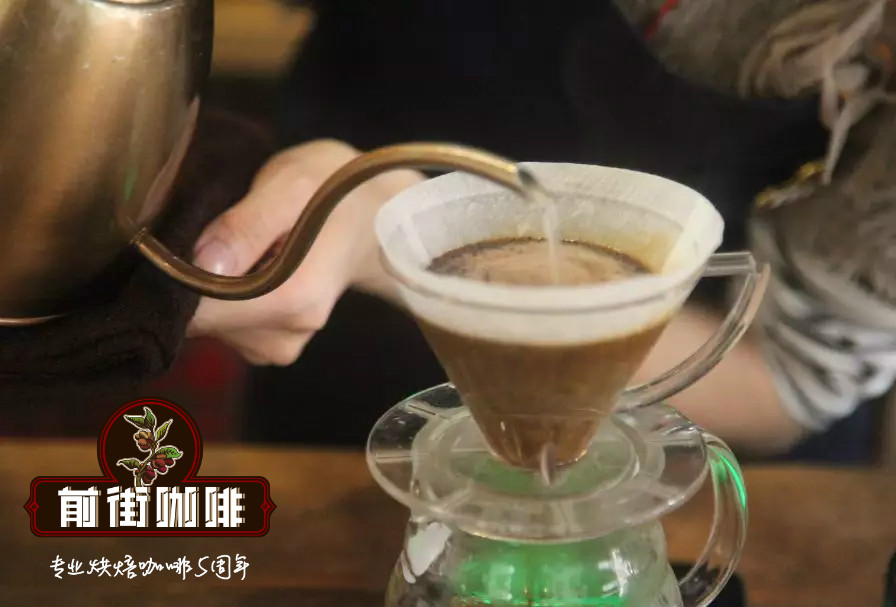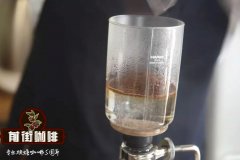What coffee producing areas are there in Guatemala coffee? Is the coffee good in Guatemala? Guatemala Coffee

Professional coffee knowledge exchange more coffee bean information please follow the coffee workshop (Wechat official account cafe_style)
Guatemala Coffee
Although the country is small, it has the most diverse climate in the world. There are enough changes in soil, rainfall, humidity, altitude and temperature to produce seven different types of Guatemalan Arabica coffee.
Antigua
Antigua is an internationally renowned high-quality coffee. This area is located between three volcanoes in a valley and the climate is very suitable for growing coffee. The soil is young and most suitable for coffee. Wet and dry seasons are defined as uniform ripening. The temperature range is 19-22 ℃ (66.2-71.6 °F) and the altitude is between 4600 and 5600 feet. The annual rainfall is between 800mm and 1200 mm, and the humidity is constant at 65%. Guardia Antigua Coffee is described as having a full and velvety body, rich and lively aroma, and good acidity. Bourbon, Catra and Cato coffee beans are grown in this area and are harvested every year from January to mid-March.
Fraijanes plateau
The Fraijanes area is located to the north of Amatitlan Lake, a mountain range near the Ermita Valley where the city of Guatemala is located. The soil is volcanic, and high potassium levels put the body on the cup. Recent volcanic activity from Volcan de Pacaya has stored mineral-rich ash in the area. Coffee is grown at a height of between 4000 and 5000 feet, with a medium temperature of 22C (71.6 °F). The relative humidity of these peaks is 60% and the annual rainfall is 1500 mm. The combination of these factors gives strict Guatemalan coffee beans (the highest rating in Guatemala), similar to the real Guatemala Antigua coffee. These coffees are described as having a soft aroma, full body and obvious acidity.
Koba rainforest
The area is defined as a very humid subtropical forest in the north of the country. In fact, the name Cobb á n comes from Maya Keckchi's "cob", which means the location of the cloud. The temperature varies according to the wind in the north, oscillating between 15-23 C (59-73 °F). The annual rainfall in this area ranges from 3300 mm to 3500 mm, and the rainy season is distributed throughout the 12 months of the year. The climate is cloudy, with several hours of sunshine and high relative humidity (85-95%). The soil is mostly limestone and clay. The microclimate is caused by the influence of the Atlantic Ocean. Between 4300 and 5000 feet above sea level, resulting in hard and strict coffee. Cobb á n coffee has a medium height, light sour and fruity taste. Rich aroma, rich aroma. Bourbon, Maragogype,Catuai,Caturra and Pache coffee beans are grown in Cabo á n and are harvested from December to March each year.
Huehuetenango Highland
This area passes through Cardi de Los Cuchamatanes, which is higher than 11800 feet. It is located on the border with Mexico and coffee is grown in an area between 5000 and 6000 feet. The rainfall is about 1800 mm and the relative humidity is 70-80%. Dry and hot winds from Mexico's Tehuantepec Plain protect the area from frost and create its unique microclimate. The average temperature is 23 ℃ (73 °F). Subtropical and humid climates contribute to the beautiful appearance and uniform ripening of coffee beans. The flowering is homogeneous, resulting in a kind of wine, high quality glass test. Grow coffee beans in Huehue,Bourbon,Caturra and Catuai. The harvest is from January to April every year.
Atitlan (Atitlan)
This area includes all the land around Lake Attilan. Coffee is harvested mainly on the Pacific side in three alpine precipitation volcanoes. In no month, Attland will have less than 50 millimeters of rain. Most producers in the region will use water from the lake for wet processing. Chemicals take the place of chemicals and are often used as fertilizers. The incidence of diseases and insect pests at high altitudes (4000-5900 feet) is very low. The humidity in this area is as high as 70-80%. Drying occurs almost entirely in the sun, and almost 95% of coffee is grown by an average of 12 hectares of small producers. Most of the coffee harvested in these areas is bourbon, but Typica,Caturra and Catuai beans are also grown. The harvest is between December and March. Atitlan coffee is fragrant. They have crisp and bright acidity and a whole body.
San Marcos, vol.
This is the hottest coffee growing area in Guatemala and has the most rainfall. It has the strongest rainy season and the earliest flow in any region. 4600-6000 feet above sea level, affected by volcanic soil and the microclimate of the Pacific Ocean. The annual rainfall is 4000-5000 mm and the humidity is between 70-80%. Bourbon, Catra and Cato coffee beans are grown in this area and are harvested from December to March every year.
Oriente-New Oriental is in Esquipulas. Its weather is similar to that of science, but not so intense. It is located outside the volcanic range and the soil is made up of metamorphic rock and clay. Coffee grows from 4300 to 5500 feet in height and from 18 to 25 ℃ (64 to 77 degrees Fahrenheit). Compared with the Koba rainforest or San Marcos, the rainfall in this area is relatively low, only 1800-2000 mm per year. Coffee from New Oriental is aromatic, with obvious acidity and good health. Bourbon, Kanue, Katula and Pachet coffee beans are all grown in the eastern part of New Europe and are harvested from December to March every year.
END
Important Notice :
前街咖啡 FrontStreet Coffee has moved to new addredd:
FrontStreet Coffee Address: 315,Donghua East Road,GuangZhou
Tel:020 38364473
- Prev

Is the coffee good at Carmen Manor in Panama? What are the flavor characteristics of Carmen Manor coffee in Panama?
Professional coffee knowledge exchange more coffee bean information Please follow the coffee workshop (Wechat official account cafe_style) Carmen Manor (Carmen Estate) has been producing and exporting high-quality Arabica coffee for 50 years. Carlos Aguilera is the third generation of landowners. The estate and processing plant were founded by grandparents Efrain and Carmen Franceschi in 1960. Fran
- Next

More like alcoholic coffee Columbia San Jose barrel fermentation treatment water washing
Professional coffee knowledge exchange more coffee bean information please follow the coffee workshop (Wechat official account cafe_style) Colombian coffee San Jose rum barrel fermentation washing treatment Colombia San Jose Washed-flavor-rum, cantaloupe, dark chocolate Rum, Melon, Dark Chocolate country: Colombia / Colombia producing area: Calda
Related
- Does Rose Summer choose Blue, Green or Red? Detailed explanation of Rose Summer Coffee plots and Classification in Panamanian Jade Manor
- What is the difference between the origin, producing area, processing plant, cooperative and manor of coffee beans?
- How fine does the espresso powder fit? how to grind the espresso?
- Sca coffee roasting degree color card coffee roasting degree 8 roasting color values what do you mean?
- The practice of lattes: how to make lattes at home
- Introduction to Indonesian Fine Coffee beans-- Java Coffee producing area of Indonesian Arabica Coffee
- How much will the flavor of light and medium roasted rose summer be expressed? What baking level is rose summer suitable for?
- Introduction to the characteristics of washing, sun-drying or wet-planing coffee commonly used in Mantenin, Indonesia
- Price characteristics of Arabica Coffee Bean Starbucks introduction to Manning Coffee Bean Taste producing area Variety Manor
- What is the authentic Yega flavor? What are the flavor characteristics of the really excellent Yejasuffi coffee beans?

